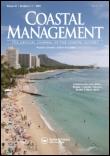Developing Human Wellbeing Indicators in the Puget Sound: Focusing on the Watershed Scale
This paper appears in the July 2014 issue of the journal Coastal Management, which focuses on the role of social sciences in Puget Sound ecosystem recovery.
Extended abstract
Planning for and monitoring human wellbeing as a component of ecosystem recovery is a growing trend in environmental management. Within the Puget Sound specifically, organizations at the watershed and basin scale have been developing recovery action plans with placeholders for human wellbeing or quality of life indicators. While the actual incorporation of human wellbeing into policy has been limited, there is significant interest to receive guidance for developing indicators and begin addressing human wellbeing in practice. This article describes the results of a pilot process to develop scientifically and practically relevant human wellbeing indicators for the Hood Canal watershed of the Puget Sound.
We gathered data on why residents and visitors value the Hood Canal from prior surveys, workshops, and nineteen open-ended interviews with diverse residents from the region. We coded these values into 100 potential indicators of human wellbeing for six domains: Psychological, Cultural, Social, Physical, Economic, and Governance. We then facilitated three workshops with 32 local stakeholders to rank and refine these indicators based on their relevance and importance to the Hood Canal. This resulted in 41 indicators highly recommended by at least two workshops and 15 indicators highly recommended by all three.
We then distributed an online survey to seven regional social scientists to further refine and rate indicators based on scales of 1-5 for scientific robustness and practicality of collecting data for the indicator. Nineteen of the 41 indicators received an average rank of four or higher. We combined the 19 highly recommended indicators from the social scientists with the 15 highly recommended indicators from all three stakeholder workshops to provided a set of 36 indicators (because of some overlap) to the Hood Canal Coordination Council, the watershed management agency comprised of representatives from the three counties and two tribes in Hood Canal.
The final indicators cover all six domains and include measures related to outdoor activity, access to local food and safe drinking water, air quality, psychological wellbeing, place identity, access to natural resources, communication effectiveness of resource management issues, trust in government, effectiveness of public policies, stewardship activities, cultural events, maintenance of rural character, strong social relationships and trust, and a natural resource-based economy that provides activity for small business, living wages, jobs, and local revenue.
The Hood Canal Coordinating Council has since selected six indicators to begin monitoring for their Integrated Watershed Plan (access to local food, emotional wellbeing, communication of resource management, traditional resource practices, strong communities, and natural resource industries). They plan to summarize these indicators in the State of The Hood Canal that will regularly report on the status of ecological and human wellbeing. The Hood Canal process is being replicated in two other Puget Sound watersheds to test hypotheses about scalability of HWB indicators in the Puget Sound.






